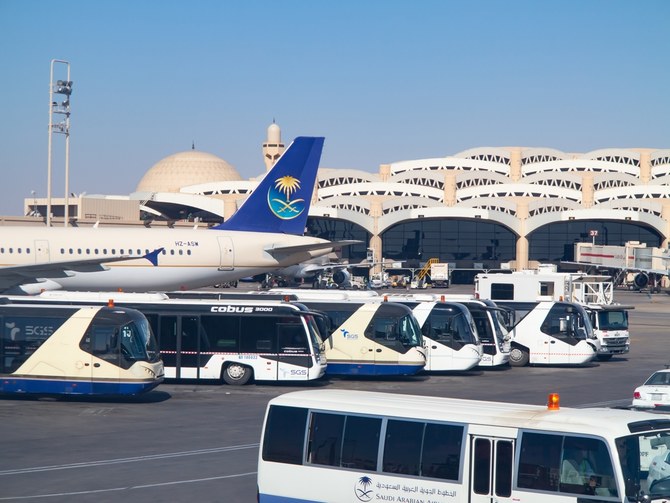RIYADH: King Khalid International Airport in Riyadh has outperformed other air terminals in the Kingdom in service levels and the overall travel experience, according to the General Authority of Civil Aviation.
This Riyadh-based airport, categorized as an air base with a capacity to handle over 15 million passengers annually, has secured the first position by achieving a commitment rate of 82 percent in August.
This rate marks a considerable increase from the 64 percent recorded in April.
The authority has set 14 key performance indicators to evaluate the performance of airports. These KPIs encompass various aspects, including passengers’ waiting times during check-in, security procedures and the duration spent at baggage claims.
Additionally, the study evaluated passport and customs screening areas, besides the accessibility of facilities for individuals with special needs.
According to the monthly report, King Abdulaziz International Airport in Jeddah achieved the second position with a commitment rate of 45 percent, reflecting an increase from the 36 percent recorded in April.
In the second category, which includes international airports in the Kingdom with annual passenger volumes ranging from 5 million to 15 million, Prince Mohammad bin Abdulaziz International Airport in Madinah claimed the top spot with a commitment rate of 82 percent.
Following closely, King Fahd International Airport in Dammam secured a commitment rate of 73 percent, as highlighted in the report.
In the third category, which pertains to international airports in the Kingdom with annual passenger volumes ranging from 2 million to 5 million, King Abdullah bin Abdulaziz International Airport in Jizan claimed the top position with a commitment rate of 88 percent.
The report also showed that Abha International Airport achieved a commitment rate of 75 percent in August.
In the fourth category, AlUla International Airport took the top position. Despite handling fewer than 2 million passengers annually, it achieved a 100 percent commitment rate, surpassing other airports in terms of total average waiting times for departure and flight arrival.
In the fifth category, which encompasses domestic airports, Najran Airport emerged as the leader with a 100 percent commitment rate. It outperformed all competing airports in average waiting time for departure and flight arrival.




























